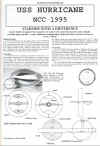Back to SciFi page
 |
< Original Article published in Science Fiction Modeller Issue #21 Mar/Apr 1996 | |
 |
 |
 |
 |
 |
 |
 |
U.S.S Destination NCC 1924 |
The USS Destination is a high-warp experimental craft designed to attempt velocities beyond WARP 9.999. Utilising the saucer section of a Galaxy Class Starship, it adds the experimental engine design known as Interparted Cross-Defusement Propulsion Unit (ICPU) aka 'UniNacelle'.
History (revised April 2003): The ICPU was originally conceived by the eminent professor of engine dynamics, Prof. Hans Bellwort. He submitted it to Starfleet Propulsion Laboratories for evaluation. Due to the advanced and radical nature of the design, Starfleet did not see it as a feasible project. He never saw his design put to use before his death. His design encompassed a single large ring shaped nacelle with a bussard scoop (hydrogen collector) around the entire front face of the nacelle. The Warp field generated by the shape was difficult to regulate, but provided a much more sound 'bubble' at high speeds compared to the standard twin nacelle configuration. His theory also suggested a far greater efficiency.
The first prototype was built during 2295 using a decommissioned 'Enterprise' class (Constitution refit) starship primary hull (original commissioned name is unknown). The prototype, dubbed USS Hurricane NCC-1995, never passed warp one, as during its maiden test flight when unexpected variances nearly tore the ship apart. The project was scrapped and the ship was dismantled.
With later theories on 'Trans-warp' systems, the ideas proposed by Pr Bellwort were re-investigated by the SFPL team in 2353 and a proposal was put forth to build another prototype. It was surmised that with new theories, technologies and equipment, the theory of Interparting Defusement and the 'UniNacelle' may have a use in 'faster than warp' travel. The submission was refused by Starfleet Command, however a reprieve came in the form of the USS Galaxy. It's unfortunate destruction had left the ship with no secondary hull, and the project only required a primary hull, so the remnants were delivered to Utopia Planitia on October 10.
Stripped of all non-essential equipment, the hull was mated to a huge oval shaped nacelle, rather than the circular shape of its predessessor. Utilising the docking system that all Galaxy-class ships carry, the primary hull was joined in a non-permanent fashion, this gave the Uninacelle a secondary purpose, of being able to collect saucer sections of Galaxy class ships that may have been stranded without Warp drive. The ship without a saucer in place can be operated from the secondary bridge, which is the same as the 'battle bridge' from the Galaxy class ship, located atop the secondary hull and is concealed when the saucer is in place.
During its maiden test flight, 'old ghosts' appeared and despite the huge computing power of their modeling simulations, the variances again caused problems with the ship. It not only failed to achieve Trans-warp speed, it also failed in gaining maximum Warp speed of 9.9999, falling well short at about 8.8.
Originally published in 'Science Fiction Modeller' magazine (Australia) in Mar/Apr 1996, my model (designed in 1995, hence the registry number) was made from the saucer section of the Enterprise-A from AMT's Enterprise Evolution Set (TOS, ST1-3, TNG). I also made the second prototype from the Enterprise D saucer (after separating it). That saucer was then re-built at a later date into the USS Reliant (Nebula Class).
Recreated in the 21st century, I applied my computer 3D modeling skills to reproduce the above pictures in 3D studio max 4. The mesh consists of primary hull which is detachable and carries the markings USS Destination NCC 1024 (I think it should be 'NX' as its a prototype and this was the usual prefix for such). a secondary hull, which I revised the addition of massive power conduits which go from the hull to the nacelle. Where my earlier depictions had the power going from the primary hull's edges, but I didn't like this, as the design would have been incompatible with the existing Galaxy class ships. I also added reinforcement clamps to the side 'join' area. I added an illumination effect to light the windows and add 'designation lighting'. The splotchy blue on the nacelle's bussard scoop is an animated 'noise' effect in front of the red internals. The secondary hull also allowed placement of the deflector array on it's underside, rather than on the UniNacelle itself. Lighting (top down) shows that the design would suffer a 'band of shadow' across the hull which might not please the TV show's director.
I also added a nearby star for effect.